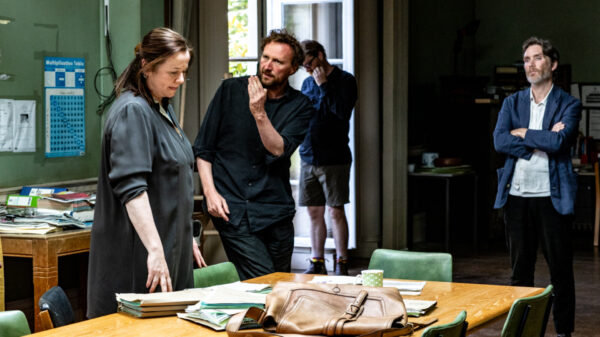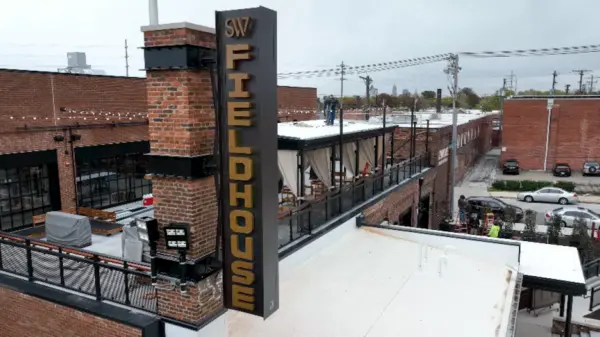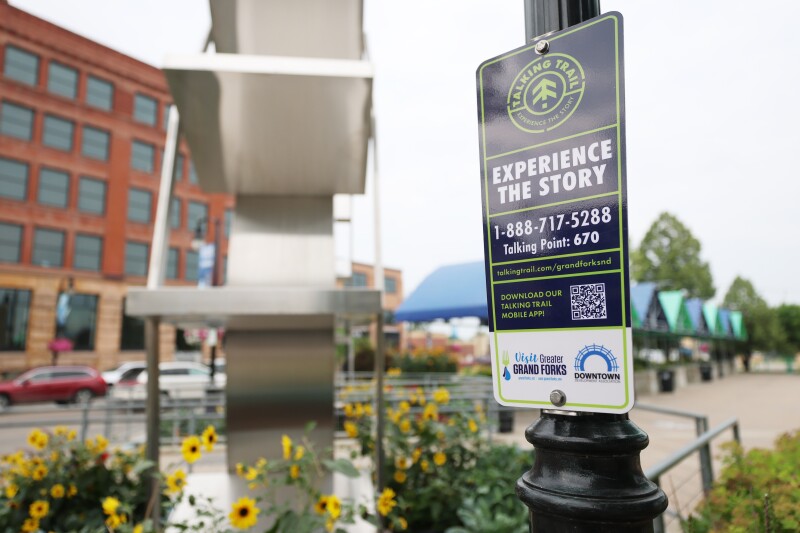Residents and visitors in Grand Forks can now explore the city’s historic downtown through a new initiative called Talking Trails. This free app allows users to engage with the rich history of the area by listening to stories related to various landmarks. The project is a collaboration between the Downtown Development Association (DDA) and Visit Greater Grand Forks, aimed at enhancing the community’s cultural experience.
Jill Proctor, president and chief executive officer of the DDA, emphasized the importance of sharing local history. “We just think it’s important that we continue to share the history of the things that have impacted downtown, impacted our community,” she stated. The project includes physical signs in downtown locations that direct users to the app, where they can learn more about significant sites.
Exploring Historic Landmarks
The Talking Trails app features ten initial locations, with the potential to expand to twelve. Users can find these locations listed in the app and on the Grand Forks Talking Trail website. Each site has a sign positioned to face pedestrians, minimizing distractions for drivers, and provides a QR code for easy app downloads.
The app is designed with user convenience in mind. It includes a map feature that opens the user’s phone maps when a location is selected. Proctor highlighted the personal nature of many stories included in the app, noting that some were recorded by local figures. For instance, the story behind the light pillars in downtown Grand Forks is narrated by their designer, David Badman, who explains their significance and design intent.
Proctor noted that interest in downtown tours is high, but the Talking Trails initiative allows visitors to explore at their own pace. “Having the Talking Trails will allow people to take walking tours at their own pace, at any time during the day,” she explained. This flexibility appeals to both residents and tourists seeking to learn more about the area.
Community Engagement and Future Expansion
The launch of Talking Trails also aims to enhance recreational opportunities for visitors. Julie Rygg, executive director of Visit Greater Grand Forks, expressed optimism about community involvement. “We’re always interested in looking for ways that visitors have more recreational things to do while they’re here,” she said. The app is expected to enrich the experience of exploring downtown by providing historical context.
Commenting on the impact of the initiative, Proctor observed that many people express curiosity when encountering historical monuments. She noted how visitors often react to sites on North Third Street, remarking on the historical events that have shaped the area. “We see them pointing and looking confused,” she added, indicating a desire for deeper understanding.
The Talking Trails app encourages users to uncover Grand Forks’ history at their leisure, offering an engaging way to connect with the past. Proctor envisions this as an opportunity for people to “stumble upon and just go out and explore and enjoy all the things that downtown has to offer.”
Looking ahead, Rygg hopes for strong community support to enable further expansion of Talking Trails throughout Grand Forks and neighboring East Grand Forks. “Our hope is that this will be well received and we will pursue it further,” she stated, indicating a commitment to preserving and sharing the local heritage.
Overall, Talking Trails represents a significant step in making Grand Forks’ history accessible to a wider audience, fostering a sense of community pride while enhancing the visitor experience.






































































